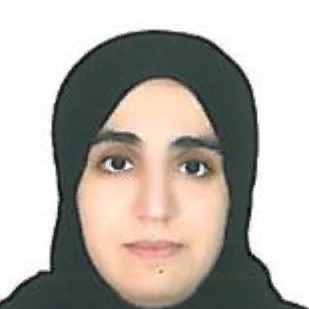International Journal of Image, Graphics and Signal Processing (IJIGSP)
IJIGSP Vol. 9, No. 4, 8 Apr. 2017
Cover page and Table of Contents: PDF (size: 1104KB)
Mapping Urban Expansion Due to Special Economic Zones in the United Arab Emirates Using Landsat Archival Data (Case Study Dubai)
Full Text (PDF, 1104KB), PP.22-29
Views: 0 Downloads: 0
Author(s)
Index Terms
Special economic zones, urban expansion, Land use analysis, Landsat data
Abstract
There are presently about 40 special economic zones (SEZs) across the seven federating emirates of the United Arab Emirates. These SEZs include businesses technology hubs, science cities, recreational parks, and media parks. This study aims to document how the SEZs change or affect the transformation of urban expansion and land use practices in the UAE. The study aims to show the new industrial growth and expansion related with land use that emerge around the SEZs compared to before their establishment. The research is based on sequential analysis of temporal geospatial digital maps generated from archival Landsat TM in 2000 and Landsat 8 OLI of 2015. The study area is located around Alqouz and Albarsha localities situated in the western side of the city of Dubai with a vibrant SEZs. The analysis results show remarkable expansion of 23.6% of industrial and warehouse infrastructure coupled with major residential expansion of 18.6%. The findings of this research would help local authorities and corporation in planning for the future of these global businesses and local sustainability in the context of environmental planning and sustainability.
Cite This Paper
Naeema Alhosani,"Mapping Urban Expansion Due to Special Economic Zones in the United Arab Emirates Using Landsat Archival Data (Case Study Dubai)", International Journal of Image, Graphics and Signal Processing(IJIGSP), Vol.9, No.4, pp.22-29, 2017. DOI: 10.5815/ijigsp.2017.04.03
Reference
[1]Abbas, K., & Rydh, M. (2012). Satellite Image Classification and Segmentation by Using JSEG Segmentation Algorithm. International Journal of Image, Graphics and Signal Processing, 4(10), 48.
[2]Aguilar, A.G., Ward, P.M., Smith Sr., C.B. (2003). Globalization, regional development, and mega-city expansion in Latin America: analyzing Mexico City’s peri-urban hinterland. Cities., 20, 3–21.
[3]Ahmed, N., Blackburn, A., and Whyatt, D. (2012). Quantifying Urban Growth in Dubai Emirate: A Geoinformatics Approach., 375-382.
[4]Bovik, A. C. (2006). Handbook of image and video processing. Beijing: Publishing House of Electronics Industry.
[5]Chaudhuri S, Yabuuchi S. (2010). Formation of special economic zone, liberalized FDI policy and agricultural productivity. International Review of Economics & Finance,19(4):779–788.
[6]Ecognition essential user guide 1.0 Published by: Trimble Germany GmbH, Arnulfstrasse 126, D-80636 Munich, Germany.
[7]Farole T, Akinci G. (2011). Special economic zones progress: emerging challenges, and future directions. The World Bank, Washington DC.
[8]FIAS. (2008). Special Economic Zones: Performance, Lessons Learned, and Implications for Zone Development. World Bank, Washington, DC.
[9]Knox, P. L. (Ed.). (1993). The restless urban landscape. Pearson College Division.
[10]L´opez, E., Bocco, G., Mendoza, M., Duhau, E. (2001).Predicting land-cover and land-use change in the urban fringe: a case in Morelia city, Mexico. Landsc. Urban Plan., 55, 271– 285.
[11]Sebastian M., Jayaraman V. and Chandrasekhar M.G. (1998). Facilities management using remote sensing data in a GIS environment. Acta Astronautica, , 43 (9-10), 487-491.
[12]Sheng N, Tang UW, Zhuhai. (2013) Cities. 32:70–79.
[13]Stow, D.A., Chen, D.M. (2002). Sensitivity of multitemporal NOAA AVHRR data of an urbanizing region to land-use/landcover changes and misregistration. Remote Sens. Environ., 80, 297–307.
[14]Turner, B., Moss, R. H., & Skole, D. L. (1993). Relating land use and global land-cover change. In International Geosphere-Biosphere Programme, Stockholm; Report, 24/Human Dimensions of Global Environmental Change Programme, Barcelona; Report 5.
[15]Yoon, G. W., Cho, S. I., Jeong, S., & Park, J. H. (2003). Object oriented classification using Landsat images. Forest,. 47(5.89), 37-50.
[16]Wang, J. (2013) The economic impact of Special Economic Zones: Evidence from Chinese municipalities Journal of Development Economics, Volume 101 March, Pages 133–147.
[17]Wan Z, Zhang Y, Wang X, Chen J. (2014). Policy and politics behind Shanghai’s Free Trade Zone Program. Journal of Transportation Geography, 34:1–6.
